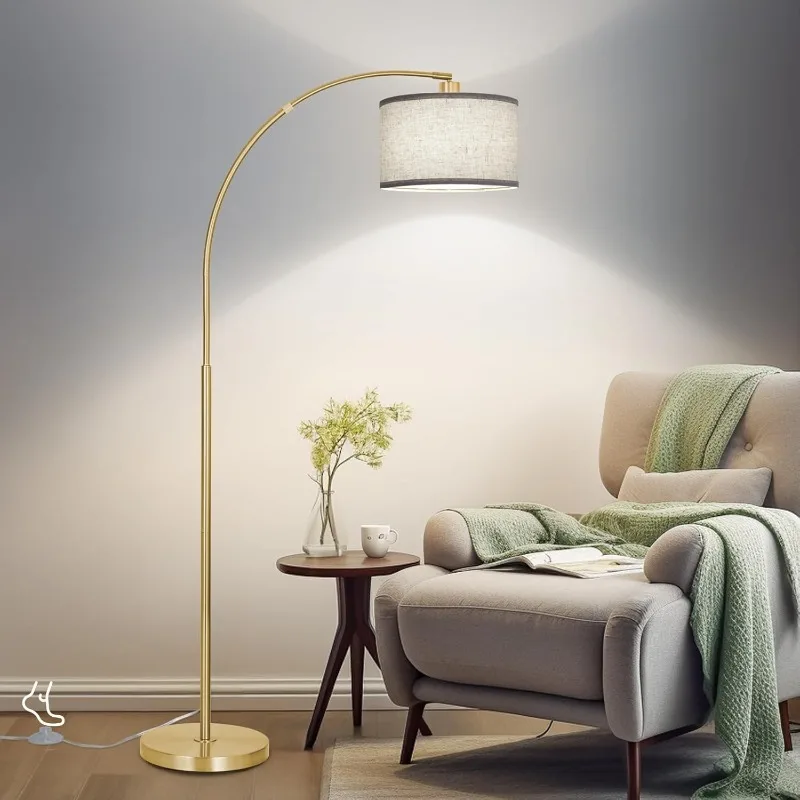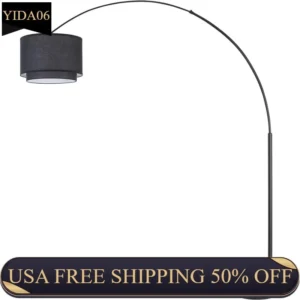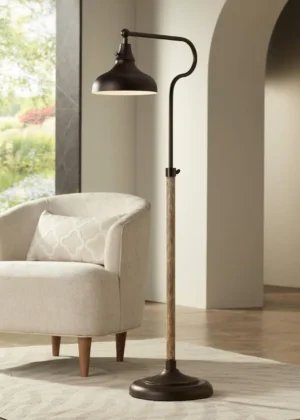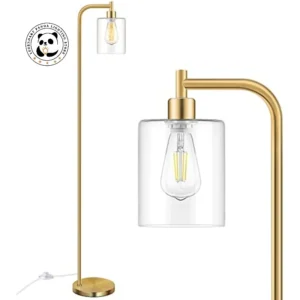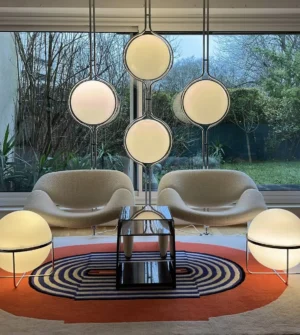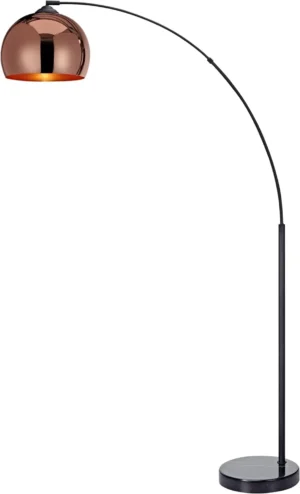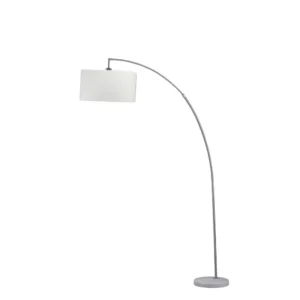Introduction to Arc Lamp Technology
Arc lamps represent one of the earliest forms of electric lighting technology, operating on a simple yet powerful principle: creating light through an electric discharge between two electrodes. These pioneering illumination devices predated the incandescent bulb and once revolutionized public lighting systems across cities worldwide.
Despite their historical significance as breakthrough technology, arc lamps come with substantial drawbacks that have led to their near-complete replacement in most applications. These early electric lights played a crucial role in the development of modern illumination, particularly for street lighting and public spaces during the late 19th century.
While understanding the choosing perfect arc floor lamp process has evolved dramatically since those early designs, examining the limitations of traditional arc lamp technology helps appreciate why modern alternatives have become vastly preferred. The disadvantages fall into several key categories that we’ll explore in detail—from maintenance burdens to safety concerns and environmental impacts.
Maintenance Burdens and Operational Complexities
Traditional arc lamps require extensive and frequent maintenance compared to virtually any modern lighting technology. This maintenance burden represented one of their most significant practical drawbacks.
The core maintenance issues include:
- Electrode replacement: Carbon electrodes burn away quickly during operation, sometimes requiring replacement after just hours of use
- Gap adjustment: The distance between electrodes needs constant monitoring and adjustment as carbon rods burn down
- Mechanical regulator maintenance: Complex mechanical systems designed to maintain proper electrode spacing frequently required adjustment and repair
- Cleaning requirements: Carbon dust and residue accumulation demands regular cleaning
- Specialized knowledge: Operation required trained personnel who understood the complex systems
In urban settings, maintaining arc lamps was quite literally a full-time profession. Cities employed dedicated “lamp lighters” whose sole responsibility was tending to these demanding fixtures. Modern lighting technologies have virtually eliminated these maintenance requirements.
The complexity extended beyond just replacing parts. Arc lamps require additional components like ballasts and igniters to regulate current and start the arc. These components added further potential failure points and maintenance concerns that made the technology increasingly impractical as alternatives developed.
For those seeking modern alternatives, understanding the perfect arc floor lamp guide can help avoid these historical maintenance headaches through contemporary design.
Safety and Health Hazards
The operation of traditional arc lamps introduces several significant safety hazards that made them problematic for many applications, particularly in enclosed or residential spaces.
Harmful UV Radiation
Arc lamps generate substantial ultraviolet radiation across multiple wavelength bands (UV-A, UV-B, and UV-C), with unenclosed models presenting particularly severe risks. Extended exposure could lead to skin damage and eye injuries similar to severe sunburn or welder’s flash. These UV emissions made proper shielding essential but often inadequate.
Fire Hazards
The extreme heat generated at the arc point—reaching temperatures exceeding 6,000°F (3,316°C)—created obvious fire risks. Theater fires attributed to arc lighting were not uncommon in the early days of their use, with the hot carbon particles sometimes ejected from the lamp igniting nearby flammable materials.
Spark and Particle Emissions
During operation, arc lamps frequently emit hot sparks and carbon particles (sometimes called “buckyballs”). These emissions could travel significant distances from the lamp itself, creating fire hazards well beyond the immediate vicinity of the fixture.
Electrocution Risks
The high voltage required to create and maintain the arc posed serious electrocution risks to operators and maintenance personnel. Early systems lacked many modern safety features, making them particularly dangerous to adjust or service.
Air Quality Concerns
Carbon monoxide production presented a serious but often overlooked danger. Indoor use of arc lamps could lead to dangerous accumulations of this odorless but deadly gas. Buildings using arc lighting required significant ventilation, which was often insufficient in practice.
These substantial safety concerns help explain why, despite their brightness advantages, arc lamps were gradually phased out as safer technologies became available. Modern consumers considering whether are arc floor lamps good for their spaces should understand these historical risks have been eliminated in contemporary designs.
Environmental Concerns and Hazardous Materials
Beyond their immediate operational hazards, traditional arc lamps present several environmental concerns that make them problematic by modern standards.
- Mercury content: Many arc lamp variants, particularly mercury vapor types, contain significant quantities of this toxic heavy metal
- Disposal challenges: Proper disposal requires specialized handling to prevent environmental contamination
- Energy inefficiency: Traditional arc lamps convert a relatively small percentage of input energy to visible light, with much lost as heat
- Carbon footprint: Their high energy consumption translates to increased carbon emissions compared to modern alternatives
- Ozone production: Some arc lamp designs generate ozone during operation, contributing to air quality issues
The mercury content is particularly problematic from a modern perspective. If improperly disposed of, this hazardous material can contaminate soil and water supplies, potentially entering the food chain. Today’s environmental regulations would make many traditional arc lamp designs challenging to manufacture or use.
The inefficient energy conversion represents another significant environmental drawback. While arc lamps produce bright light, they do so at the cost of substantially higher energy consumption than modern alternatives. This inefficiency translates directly to higher carbon emissions and resource consumption over the life of the lighting system.
Modern lighting solutions have addressed these concerns through advanced technologies like the ultimate guide LED arc floor lamp approaches, which eliminate hazardous materials while dramatically improving efficiency.
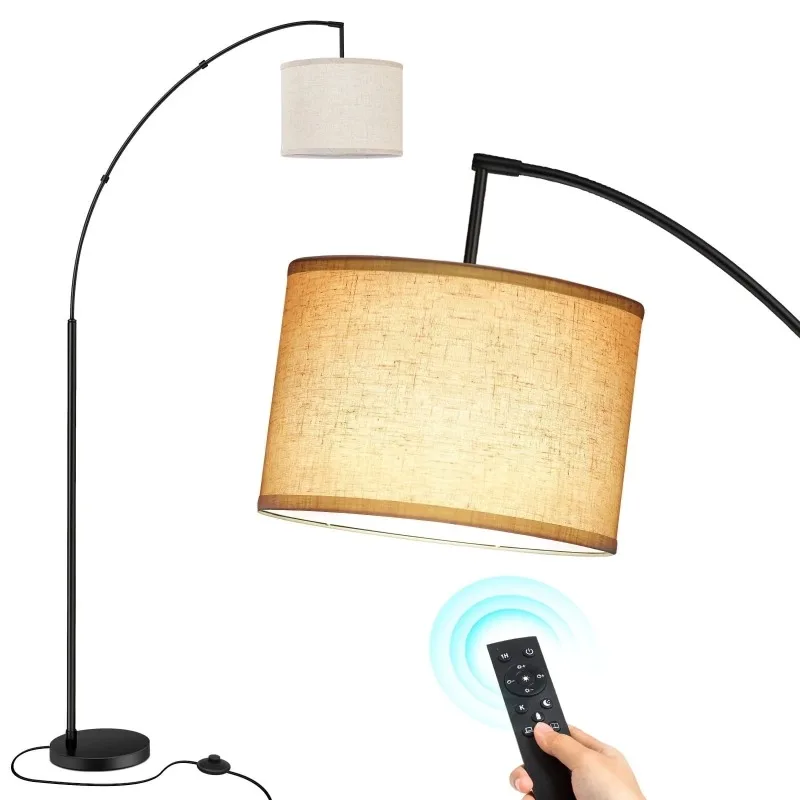
Performance and Efficiency Limitations
Arc lamps suffer from numerous performance issues that affect their practicality and user experience, particularly when compared to modern lighting technologies.
The flickering and stability problems are among the most immediately noticeable issues. As oxygen interacts with carbon rods, the light output fluctuates visibly, creating an unsteady illumination that can cause eye strain and discomfort. This instability makes them unsuitable for many applications requiring consistent lighting.
Noise production represents another significant drawback. Arc lamps typically generate distinctive hissing and buzzing sounds during operation. This audible distraction makes them inappropriate for environments where quiet is valued, such as libraries, offices, or residential spaces.
Energy consumption presents perhaps the most substantial performance limitation. Arc lamps require significantly more electricity than modern alternatives to produce equivalent light output. While an LED system might use 10-20 watts to produce light comparable to a small arc lamp requiring 500+ watts, this inefficiency translates to substantially higher operating costs.
Other performance limitations include:
- Extended warm-up periods before reaching full brightness
- Poor color rendering compared to modern alternatives
- Brightness inconsistency over the operational period
- Radio frequency interference affecting nearby electronic devices
- Inability to restart immediately after power interruption
These performance issues explain why even before safety concerns became paramount, many users sought alternatives as they became available. Today’s LED arc floor lamp options solve these efficiency problems while maintaining or improving light quality.
Practicality and Cost Implications
The economic factors surrounding arc lamps presented substantial barriers to their continued widespread use, particularly as alternatives developed.
Initial installation costs were significantly higher than other lighting technologies. Beyond the lamp itself, arc lighting systems required specialized power supplies, transformers, ballasts, igniters, and often complex mounting systems to accommodate their size and weight. For installations requiring multiple light sources, these costs multiplied quickly.
Operational expenses proved even more problematic over time. The combination of high energy consumption, frequent replacement parts, and required maintenance created an ongoing financial burden. A typical carbon arc lamp might consume 5-10 times the electricity of alternative technologies while requiring electrode replacement every 75-150 hours of operation.
Space requirements added another practical limitation. Traditional arc lamps were bulky, heavy fixtures that demanded substantial mounting infrastructure. Their size made them impractical for many indoor applications, particularly in spaces with lower ceilings or where aesthetic considerations were important.
Perhaps most limiting from a modern perspective was their incompatibility with contemporary control systems. Arc lamps could not be easily dimmed, color-adjusted, or integrated into automated lighting systems. This inflexibility made them increasingly obsolete as lighting control technology advanced.
For consumers seeking practical alternatives, dimmable arc floor lamp options provide cost-effective solutions with superior control capabilities that address these historical limitations.
Excessive Light Output and Control Challenges
One paradoxical disadvantage of arc lamps involves their excessive brightness for many applications. While producing substantial illumination might seem beneficial, the intensity often proved overwhelming and difficult to manage in practice.
Traditional arc lamps generate light at levels far beyond what’s comfortable or necessary for many environments—particularly indoor spaces. This extreme brightness creates harsh shadows, glare issues, and visual discomfort. A single arc lamp could produce light equivalent to dozens or even hundreds of incandescent bulbs, making them impractical for anything but the largest spaces.
The control limitations compound this brightness issue. Traditional arc lamp technology offers virtually no ability to dim or modulate light output. Unlike modern systems where brightness can be adjusted from 1-100%, arc lamps typically operate at either full output or nothing. This binary operation makes them unsuitable for applications requiring lighting flexibility.
Light quality presents further challenges. The harsh, often bluish-white light produced by arc lamps creates an unnatural illumination that can distort colors and create an institutional atmosphere. The resulting shadows tend to be exceptionally sharp and defined, which can be problematic in many settings.
For outdoor applications, the uncontrolled brightness contributes significantly to light pollution. Without precise directional control, much of the light scatters upward and outward, affecting astronomical visibility and disrupting natural darkness cycles for wildlife.
Modern adjustable arc floor lamp designs have overcome these limitations through advanced technology that provides precise control over both light direction and intensity.
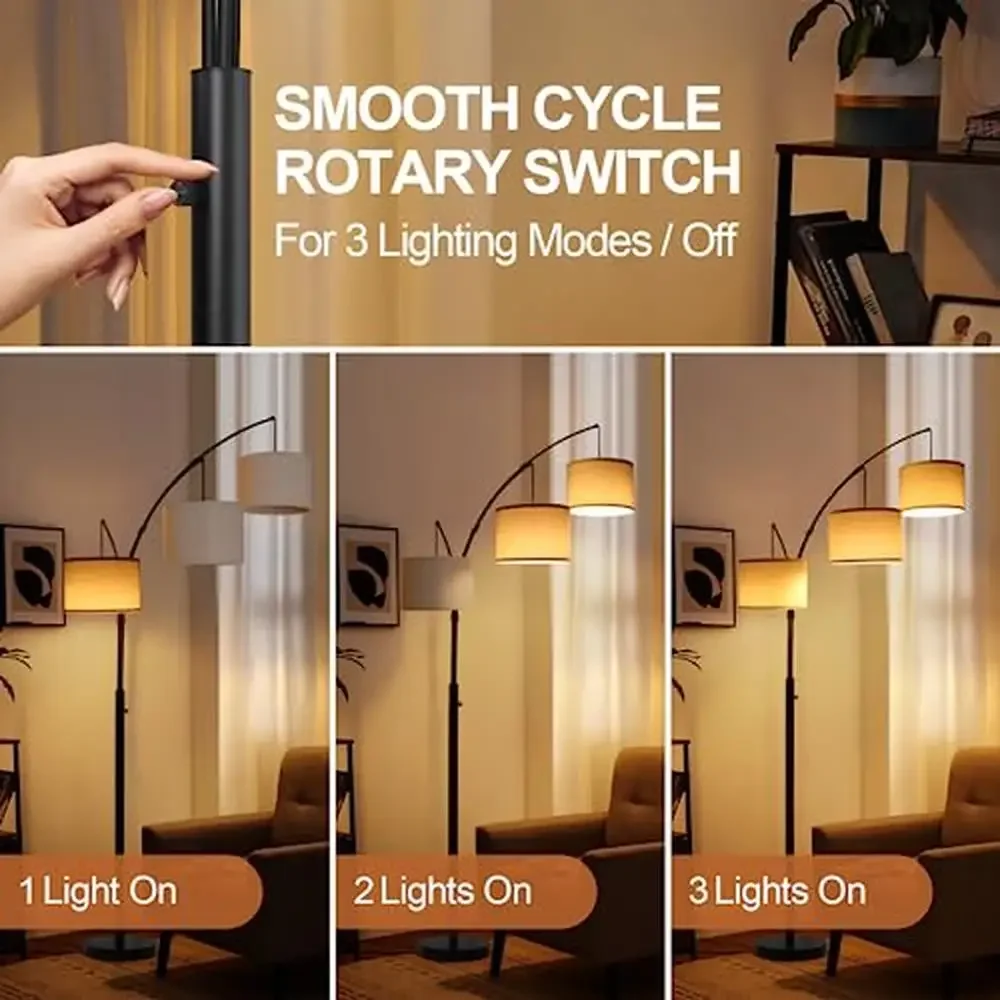
Modern Alternatives that Overcome Arc Lamp Disadvantages
Contemporary lighting technologies have systematically addressed virtually all the disadvantages of traditional arc lamps while maintaining or improving upon their beneficial characteristics.
| Aspect | Traditional Arc Lamp | LED Alternative |
|---|---|---|
| Lifespan | 75-500 hours | 25,000-50,000 hours |
| Energy Efficiency | 30-50 lumens/watt | 90-150+ lumens/watt |
| Maintenance | Frequent (daily/weekly) | Minimal (years between service) |
| Safety Hazards | Multiple serious concerns | Virtually none |
| Control Capabilities | Limited/none | Full dimming, color control |
| Environmental Impact | Significant | Minimal |
LED technology represents the most comprehensive solution to arc lamp limitations. These solid-state lighting systems produce equivalent or superior brightness while consuming a fraction of the energy. With no moving parts, hazardous materials, or replacement components, their maintenance requirements are negligible compared to arc lamps.
Fluorescent lighting initially served as a transitional technology that addressed some arc lamp limitations. While still requiring ballasts and containing small amounts of mercury, fluorescent systems dramatically reduced energy consumption and maintenance needs compared to arc lamps.
Halogen and high-intensity discharge (HID) technologies also provided interim solutions for certain applications. They improved upon energy efficiency and lifespan while retaining the ability to produce intense light output for specialized uses.
Perhaps most transformative has been the integration of smart controls into modern lighting. Contemporary systems can be adjusted remotely, programmed for specific patterns, color-shifted, and integrated into home automation systems—capabilities completely impossible with traditional arc lamp technology.
For those seeking modern aesthetics with contemporary performance, contemporary arc floor lamp designs maintain the visual appeal while eliminating historical disadvantages.
Contemporary Arc Floor Lamp, Large Arc Floor Lamp, Oversized Arched Floor Lamp
$460.63 Select options This product has multiple variants. The options may be chosen on the product pageAdjustable Arc Floor Lamp, Bronze Arc Floor Lamp
Price range: $440.95 through $558.52 Select options This product has multiple variants. The options may be chosen on the product pageBrass Arc Floor Lamp, Contemporary Arc Floor Lamp, LED Arc Floor Lamp
Price range: $490.72 through $522.04 Select options This product has multiple variants. The options may be chosen on the product pageChrome Arc Floor Lamp, LED Arc Floor Lamp
Price range: $304.95 through $1,210.40 Select options This product has multiple variants. The options may be chosen on the product pageContemporary Arc Floor Lamp, Large Arc Floor Lamp, Marble Base Arc Floor Lamp
$224.94 Select options This product has multiple variants. The options may be chosen on the product pageContemporary Arc Floor Lamp, Silver Arc Floor Lamp
$459.99 Select options This product has multiple variants. The options may be chosen on the product page
Why Arc Lamps Still Have Limited Specialized Applications
Despite their numerous disadvantages, traditional arc lamp technology still finds niches in highly specialized applications where their unique characteristics outweigh their drawbacks.
Cinema projection represented one of the longest-lasting applications for carbon arc technology. The extremely bright, focused light proved ideal for projecting images over long distances in large theaters. However, even this application has largely transitioned to xenon arc and laser technologies in recent years.
Certain scientific applications still utilize specialized arc lamps. Solar simulators, used to test materials under conditions mimicking intense sunlight, often employ xenon arc lamps for their specific spectral distribution. Similarly, some specialized spectroscopy and materials testing applications rely on the unique light characteristics of certain arc lamp variants.
Industrial processes requiring very specific wavelengths for curing materials or initiating chemical reactions sometimes still employ arc technology, though increasingly these applications are finding LED or laser alternatives that offer more precise spectral control.
Even in these specialized applications, modifications have been made to minimize the traditional disadvantages. Modern enclosed designs, advanced power supplies, and automated control systems address many of the historical safety and operational concerns.
Understanding the purpose evolution arc lamps underwent helps appreciate why certain applications persisted despite the technology’s limitations, even as most uses transitioned to alternatives.
How to Choose Alternative Lighting Solutions for Different Spaces
When selecting modern lighting to replace outdated technology, several key factors should guide your decision-making process.
For living spaces, prioritize lighting with comfortable color temperatures (2700-3000K) that create inviting atmospheres while providing sufficient illumination for activities. Adjustable brightness through quality dimming systems allows flexibility throughout the day and for different uses of the same space.
In work environments, slightly cooler color temperatures (3500-4000K) often prove more conducive to focus and productivity. Task-specific lighting that directs illumination precisely where needed improves functionality while reducing energy waste.
Consider these key factors when selecting lighting:
- Purpose of the space and activities performed there
- Desired aesthetic and how lighting contributes to it
- Energy efficiency and operational cost considerations
- Control requirements (dimming, color adjustment, automation)
- Maintenance expectations and access for service
Floor lamps with arched designs provide dramatic visual interest while directing light precisely where needed. These contemporary interpretations capture the elegant curved silhouette that made original arc lamps visually appealing while eliminating their functional drawbacks.
For those seeking the perfect combination of form and function, modern arc floor lamps deliver contemporary performance with timeless design elements that enhance any space.
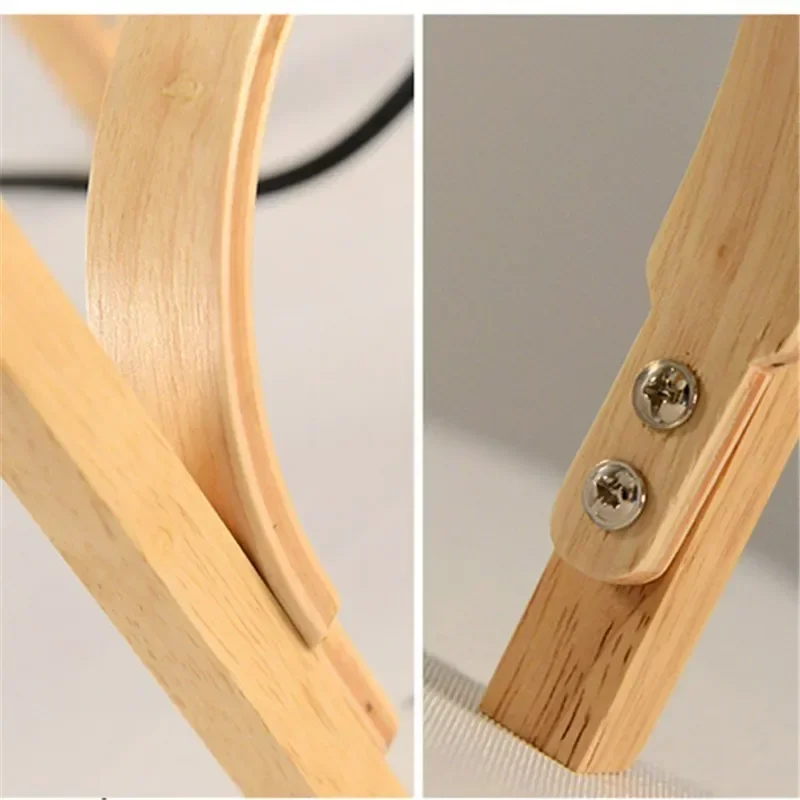
When Should You Consider Designer Arc-Style Floor Lamps?
Modern arc-style floor lamps represent a perfect fusion of historical design inspiration and contemporary lighting technology. Unlike true arc lamps, these fixtures only mimic the distinctive curved arm aesthetic while using entirely different illumination technology.
Contemporary arc-style designs excel in spaces where both ambient lighting and visual interest are desired. Their sweeping curved arms create dramatic silhouettes that serve as architectural elements within a room while providing practical illumination. The overhanging design directs light precisely where needed without requiring ceiling modifications or permanent installations.
These modern interpretations solve historical problems through:
- LED light sources eliminating heat, UV, and maintenance concerns
- Counterbalanced designs ensuring stability without excessive weight
- Adjustable components allowing personalized positioning
- Integrated dimming providing control impossible with true arc technology
The aesthetic appeal of arc-style floor lamps makes them particularly suitable for modern, mid-century, and contemporary interior designs. Their ability to project light inward from the perimeter creates unique lighting effects that can transform the feeling of a space.
Interior Ivy’s collection of black arc floor lamp designs demonstrates how contemporary materials and technology can honor this classic form while eliminating its historical disadvantages.
Frequently Asked Questions About Arc Lamps
Are all arc lamps dangerous to use?
Not all arc lamps present the same level of risk. Modern enclosed designs with proper safety certifications have eliminated many historical hazards. However, true antique carbon arc lamps do present significant safety concerns including fire hazards, UV radiation, and electrical risks that make them inappropriate for normal home use.
Can antique arc lamps be safely restored for use?
While antique arc lamps can be restored as decorative pieces, most experts advise against attempting to make them functional using original technology. The safety risks generally outweigh any historical interest in seeing them operate. Some collectors modify antiques to use modern lighting technology while preserving the external appearance.
How can you identify a genuine antique arc lamp?
Authentic antique arc lamps typically feature carbon rod holders, adjustment mechanisms for electrode spacing, and substantial electrical components like ballasts or resistors. They’re generally much heavier and more mechanically complex than other antique lighting. Most date from the late 1800s through early 1900s.
Did arc lamps really cause fires in theaters?
Yes, historical records document numerous theater fires attributed to arc lighting used for stage illumination and projectors. The combination of extreme heat, occasional spark emission, and proximity to flammable set materials and curtains created genuinely hazardous conditions that contributed to tragic fires.
Why were arc lamps so popular despite their disadvantages?
Arc lamps represented the only practical electric lighting option for high-brightness applications before alternatives developed. Their ability to illuminate large outdoor areas like streets and squares provided unprecedented safety and commercial opportunities compared to gas lighting. The disadvantages were considered acceptable tradeoffs for their revolutionary capabilities at the time.

